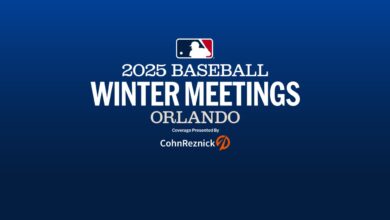
Pelotero Aims to Accelerate Player Development Curve with New Plate Intelligence Feature
Anyone who’s followed baseball over the last few years is well aware of the way technology and advanced metrics have taken over the game. This isn’t just about the professional level, as much of that tech is being all the way down at the youth level. And while some of the devices and data remain cost-prohibitive, there’s a wave of simple and inexpensive options to democratize information once confined to MLB organizations.
One of the more innovative outfits on that front is Pelotero, which we looked at a while back following the launch of their Hitter Potential Score. Now Pelotero has unveiled a new iOS app featuring Plate Intelligence, the latest enhancement to its market-leading player intelligence platform. Plate Intelligence allows hitters to easily track and analyze game performance data. It evaluates key traits like pitch recognition, swing decisions, timing, and accuracy to help players better understand how they are making their outs. Plate Intelligence not only improves a player’s in-season performance, but also provides critical insights for year-round development.
“If a player wants to be an elite hitter, their highest priority should be to not make outs,” says Bobby Tewksbary, co-founder of Pelotero. “The greatest hitters of all time (GHOATs) were obsessed with avoiding outs. They became the best at understanding why they made them and choosing the tactics necessary to avoid them in the future.”
To date, understanding how players make outs has been almost impossible. The technology to capture, analyze, and contextualize pitches and at-bats hasn’t been accessible. As a result, more attention has been paid to trackable metrics like exit velocity and launch angle. That has ultimately created a wave of players who can swing fast but struggle to hit successfully at advanced levels.
With Plate Intelligence, players go through a seamless process of logging their at-bats pitch by pitch (see images below). Insights about why players are making outs are then displayed on their dashboards in the Pelotero platform on the app. Players can see and track things like how often they are recognizing pitch types, summaries of how they tend to miss the ball when they swing, and how often they are on time in different situations. Logging at-bats also normalizes critical thinking and gets players habitually asking the right questions.
“The process of logging pitches is itself a teacher,” says Chris Colabello, former MLB player and co-founder of Pelotero. “For hitters who have never seen certain pitch types or may not understand what it means to be on time, asking them to answer these questions is the starting point for in-game growth and development.”
By combining these insights with Pelotero’s Hitter Potential Score, Pelotero generates a holistic snapshot of a player’s strengths and weaknesses as a hitter. The Pelotero platform then uses all of this data to dynamically create personalized development programs so players can quickly see what’s working, what’s not, and their path to improve.
“Pelotero’s platform continues to evolve, and this latest release is going to change everything,” adds Matt Swope, head coach at the University of Maryland. “I see a future where I leverage Pelotero in my recruiting to understand if the players I’m evaluating have been putting in the work and are capable of truly performing at an elite level.”
CI readers may be familiar with Swope from previous columns on motor preferences, particularly as it relates to the development of former Terrapin and current Cub Matt Shaw. What I really love about Pelotero and so many other tools available to the masses is that you don’t have to be an elite producer in order to benefit from them. In fact, I’d argue that this and other publicly available apps and devices significantly broaden the pathway for those late bloomers who might otherwise have been drummed out after failing to make a travel or school team at 12 years old.
I could take that a step further by arguing that travel ball plays an integral role in player development, even when we’re talking about the industry’s expansion giving rise to teams featuring players who might not necessarily “deserve” to be playing. While so-called fundraiser teams can reflect poorly on their parent organizations, there’s merit to the idea of giving kids an opportunity to continue participating in the sport they love. And when you consider how school teams have precious little time for development over the course of a very short season, travel may be the best (and maybe only) way for young players to truly get better.
All that aside, Pelotero provides players of all ages and skill levels the ability to measure their performance in order to improve it. And when players are getting better, they’re having more fun. When they’re having more fun, they want to keep playing the game. I think that’s something we can all appreciate. To learn more about how Pelotero can help your player(s), contact them directly or reach out to one of their more than 40 partner programs across the country.






